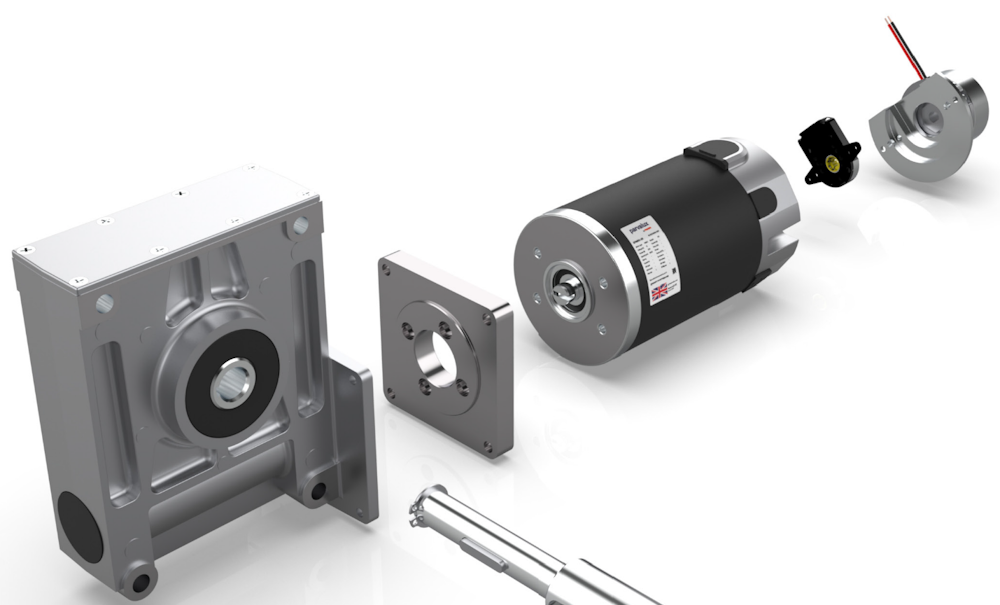Formic Stack address labor shortages with automated palletizing, while Formic Pack automates placement of prepacked goods into containers. | Source: Formic Technologies
Formic Technologies Inc. today announced that it raised another $27.4 million in Series A funding. This builds on the company’s January 2022 funding round, bringing the company’s total Series A funding to $52 million.
“[During] the first Series A, we were really at the early stages of kind of figuring out the business,” Formic co-founder and CEO Saman Farid told The Robot Report. “We had probably fewer than 10 deployments. We had some early customers; we had some data around how much productivity our robots can bring to our customers. But it was really kind of anecdotal, and in the roughly two years since then, I would say we’ve really kind of figured out a lot of those questions and have a lot more to show.”
The Chicago-based company offers its systems to U.S. manufacturers through a robots-as-a-service (RaaS) model, in which it delivers support for automation at an hourly rate. This support includes deploying the systems and providing continuous monitoring and maintenance throughout the engagement to ensure success.
Since its last funding, Formic said its robotic fleet has completed 100,000 production hours at more than 99% uptime. The company said it expects its equipment to gain another 100,000 production hours in the next 170 days.
Many manufacturers are still new to robotics
Seventy-five percent of Formic’s customers have never used robots before adopting its platform, estimated Farid. The company aims to help more businesses realize the benefits of automation, and it has its work cut out for it. An MIT report found that only 10% of U.S. manufacturers use automation in their production facilities.
At the same time, the sector will need as many as 3.8 million new employees by 2033. An estimated 1.9 million of these jobs could go unfilled, making automation more important than ever, said industry analysts.
“Manufacturers have been struggling over the last five to 10 years to complete with global wages,” Farid said. “It’s much harder when they don’t have labor available.”
“Because of our robots, a lot of our customers are actually winning more and more business,” he asserted. “They’re able to grow, instead of what they’ve spent the last 10 years doing, which is trying not to die.”
Formic plans to use funding for expansion
“In the coming years, we plan to grow more globally. We plan to expand to new regions, both in the U.S. and outside the U.S.,” Farid said. “We are going to grow our sales and deployment and maintenance team across all of those areas so that we can support customers in all those regions.”
With the new funding, Formic plans to expand its fleet of standardized equipment. The company said this will allow it to provide more automation to more manufacturers, deploy more rapidly, and offer shorter lead times.
Formic said it also hopes to increase its network of support experts across the U.S., enabling faster customer responses while upholding its maintenance service-level agreements (SLAs).
“That [funding] is really going towards spending more capital, on building more regional capabilities; building more footprint; and building more software tools to make it faster, cheaper, easier, and more reliable to deploy these robots,” Farid said.
In addition, Formic said it will enhance its equipment-agnostic software that uses AI for motion planning, predictive maintenance, system design, and creating more intuitive customer interfaces and dashboards.
“We just started our AI product tools, and we’re starting to see a huge impact,” said Farid. “Because of all the data that we are collecting from all of our deployed robots, we believe we have the biggest and best data set out there to train world-class robotics and AI models.”
“One of them is called Formic Core, which is basically like an operating system for robots, and it allows us to really quickly configure the robot to do any task in any location,” he explained. “We have another set of tools called Fast Formic Automation Software Tools, which are basically tools for really rapid site evaluation.”
“It uses that lidar scan of a customer site to quickly generate the right robot arms and design for the entire robot work cell, which is something that’s really unique,” Farid said. “We’re able to basically cut our deployment costs nearly in half because of all the AI and software tools we’ve built. We’ve also increased the ability of our crew to maintain those robots efficiently.”
Investors bring more than just capital to the table
Blackhorn Ventures led Formic’s funding round, which also included participation from Mitsubishi HC Capital America, NEC, Translink Capital, Alumni Ventures, FJ Labs, Lux Capital, Initialized Capital, and Lorimer Ventures.
“We chose to work with [Blackhorn] because they are very focused on industrial technology, and they have a group of investors in their fund that are large industrial conglomerates from around the world,” Farid said. “So, we’re able to get a lot of mutual support from them. In addition to just putting capital in, they actually are able to really help us with growing our customer base and getting more access.”
Formic also announced a joint commercial agreement with Mitsubishi HC Capital and U.S.-based Group Company Mitsubishi HC Capital America. The two companies will collaborate to source and finance the entire lifecycle of Formic’s RaaS model, an all-encompassing managed system for manufacturing automation.

 6 months ago
79
6 months ago
79









 English (US) ·
English (US) ·